‘A dirty business’: Should you really keep an exotic pet?
The number of pet reptiles in Britain is on the rise. But with reports of abandonments, escapes and failures in care, is owning an exotic pet really a good idea, asks James Moore

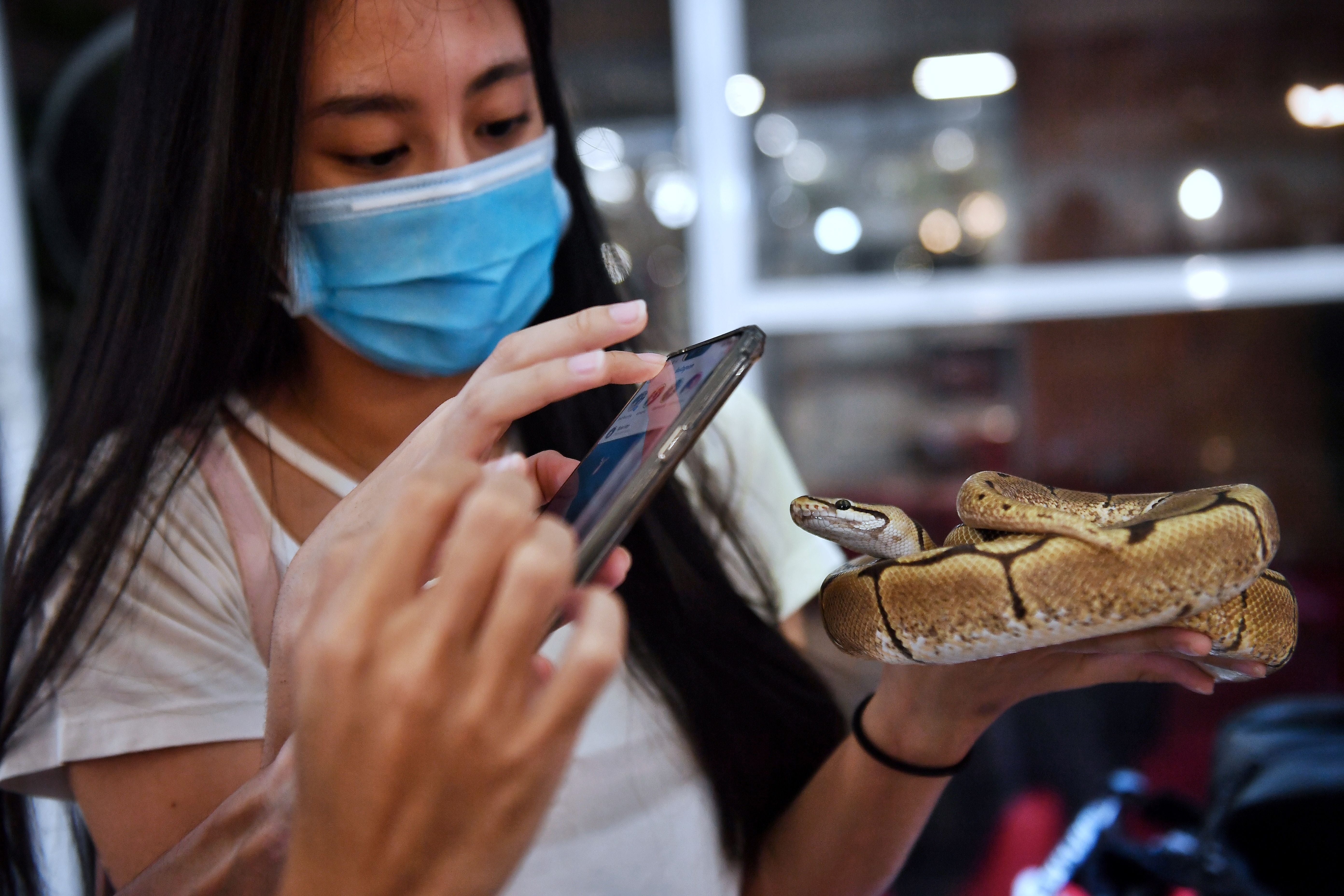
Netflix’s smash-hit documentary Tiger King turned exotic animals – and the shocking lack of oversight when it comes to their keeping, care and breeding – into an international talking point. But for most people exotic pets aren’t giant, carnivorous mammals. They are smaller, scalier and cold rather than warm blooded.
Reptile keeping is booming as a hobby. Estimates of the number in UK homes vary wildly. When the RSPCA conducted a study a few years ago it admitted that “good data is generally lacking”, but said it believed there were in the region of 700,000 snakes, lizards, turtles and tortoises in Britain’s homes, up from 400,000 in 2008. However, it noted that another report using a different methodology in the latter year came up with in excess of 7 million.
What the charity does say is that reptile-related calls are rising, and that is as good an indicator of growth as any.
Keepers argue that reptiles can make ideal pets for people with busy modern lifestyles. They require far less feeding and cleaning than their warm blooded counterparts. They can cope just fine without any human interaction for days on end. They don’t, in theory, require as much space as a dog or a cat. And the allure they hold can be considerable. There is something fascinatingly alien about them when compared to mammals. They are conversation pieces. They can be quite stunningly beautiful, even to those of us wary of getting too close.
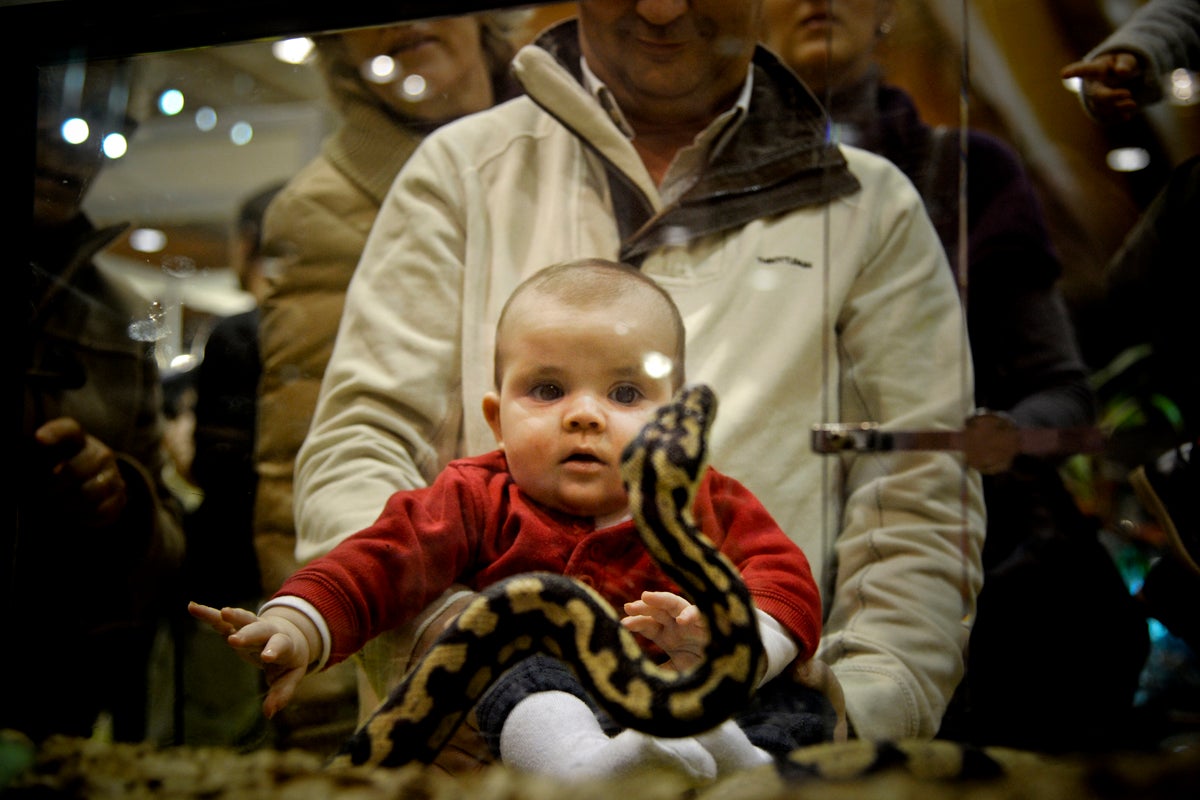
Yet the hobby is the cause of considerable controversy. Stories concerning some of the more extreme examples of abandonment crop up fairly regularly. Last year one batch of 16 snakes, and then another of 13, were found dumped in a bin behind a fire station in Sunderland. A couple of years previously a boa constrictor, thought to be an abandoned pet, was filmed eating a pigeon on Leytonstone High Road. Then there was the corn snake – Tango – that a Leeds man found climbing his bedside table in the middle of the night. That one also happened last year.
Keepers point out that these are isolated incidents but critics say poor keeping practices abound. They want tougher regulation. Some argue for an outright ban. Currently, Section 9 of the Animal Welfare Act places a duty of care on keepers to ensure they take reasonable steps “in all circumstances” to meet the welfare needs of their animals “to the extent required by good practice”.
The spider gene produces snakes with a beautiful pattern, but it is also associated with a neurological condition that leads to a head wobble that can impede a snake’s ability to strike
But what is the definition good practice when it comes to, say, a snake? There are no specific legal requirements when it comes to space, for example, a subject currently the subject of a heated debate.
Elisa Allen, director of People for the Ethical Treatment of Animals (Peta), picks up this point. She says: “Snakes are the only species not afforded even a minimum enclosure size under current regulations. As a result, the vast majority of captive snakes in the UK are never allowed to stretch out fully, even though herpetologists agree that being able to do so is vital to their wellbeing.
“Such a restrictive environment causes them immeasurable suffering and often leads to ill health. More than 30,000 members of the public have joined our call for Defra to update animal welfare regulations urgently so that these smart, sentient beings at least have room to straighten their bodies when held captive.”
The charity doesn’t hold back when it comes to the hobby. Its website lists five reasons “to NEVER buy a snake”.
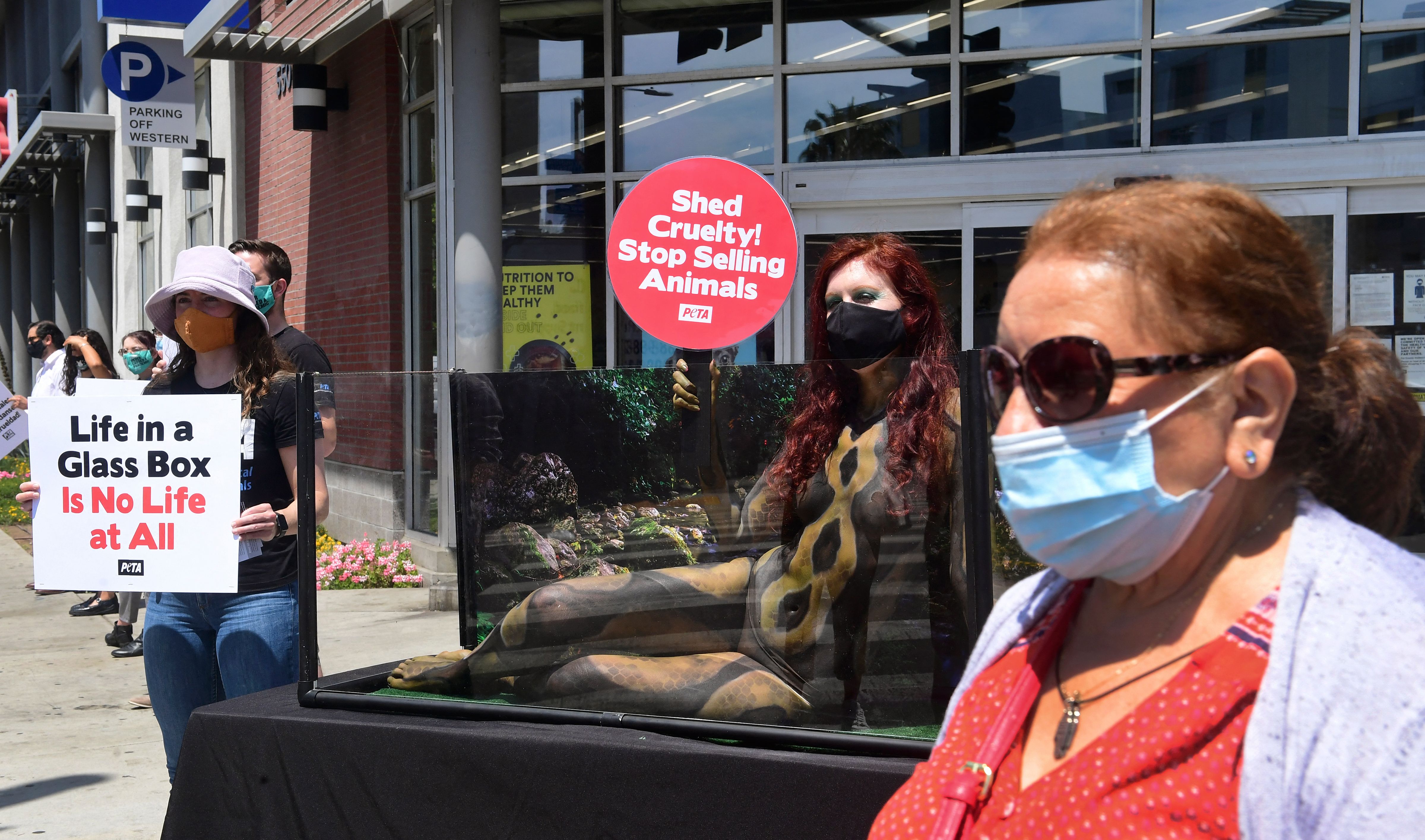
They include the claim that captivity is “cruel”, that snakes have specialised needs inexperienced human keepers aren’t attuned to, that keeping them perpetuates “a killing cycle” because of their need for rodents as food, that it’s a “dirty business” involving the taking of animals from the wild and that as much as 75 per cent of pet snakes, lizards, tortoises, and turtles die within one year in a human home.
The last of those refers to an article published by the Royal Society of Biology. It should be said that the number is hotly disputed by reptile fanciers. “It’s simply a statement made in an article but no data was presented and when challenged to provide the data set used to make the claim it was never forthcoming,” complains Chris Newman.
I was put in touch with Newman by the International Herpetological Society (IHS), which itself was the subject of considerable controversy within the reptile community when it banned spider ball pythons (royal pythons in the UK) from its shows and events.
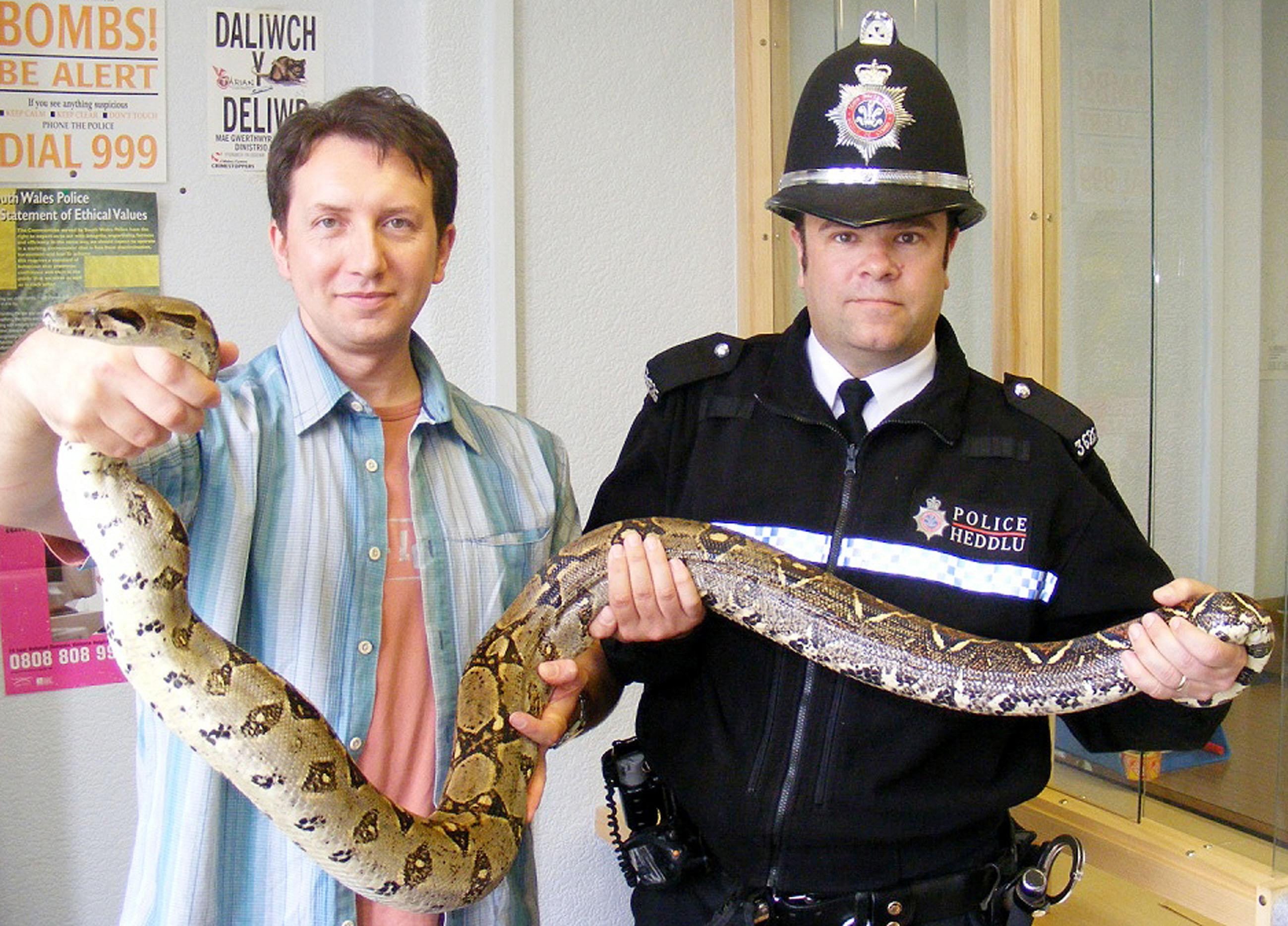
Some vocal American YouTubers (like many other activities, YouTube has made stars of the owners of the most popular reptile channels) thought Britain was trying ban spiders.
It was not. The IHS is a private organisation. It simply took the decision that it would not allow spiders and a number of other “morphs” – a term used for reptiles with colouration or pattering different from that of wild type animals – to be displayed at its shows. The reason? Their association with negative health conditions.
The spider gene produces snakes with a beautiful pattern, but it is also associated with a neurological condition that leads to a head wobble that can impede a snake’s ability to strike. The most extreme examples are hard to look at and the gene is lethal to members of the species with one copy from each parent.
“What we need to do as keepers is to act responsibility. Where there is clearly a welfare issue we must act,” says Newman, a keeper of many years of experience who helps rescue and re-home reptiles as well as caring for his own.
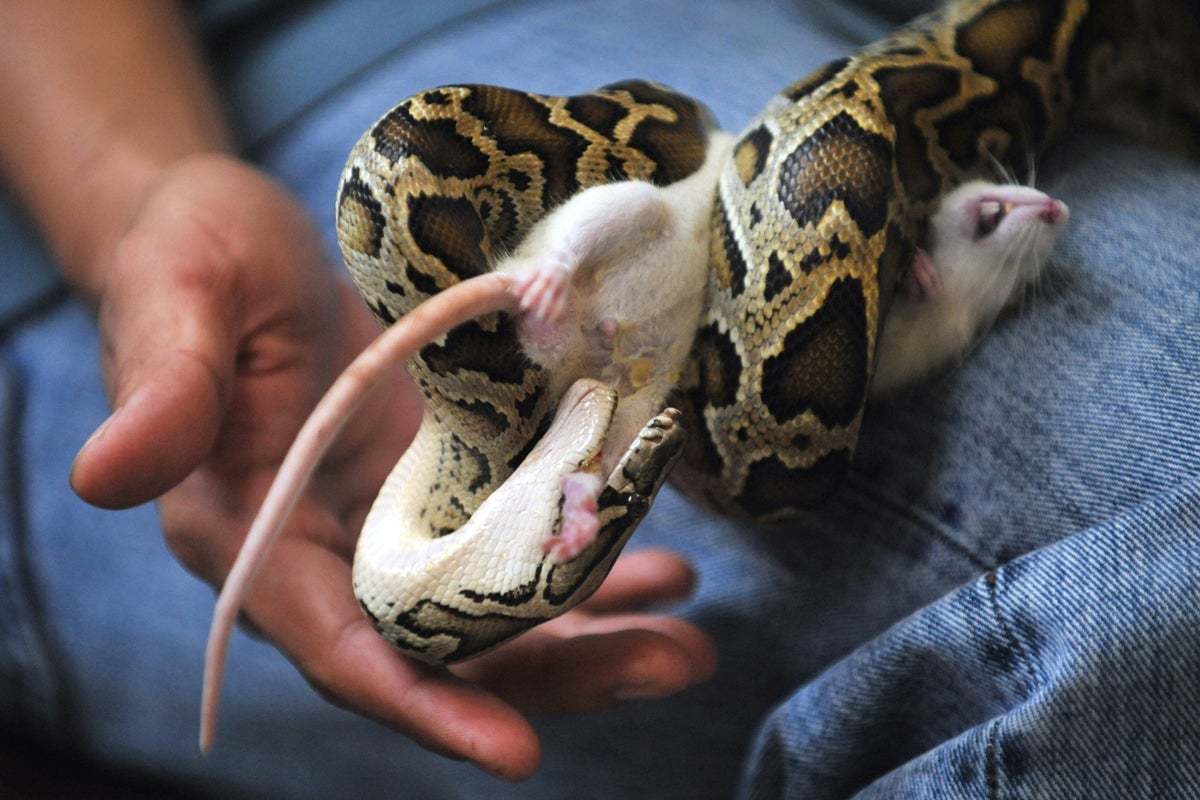
The ban also applies to jaguar carpet pythons and leopard geckos with a gene known as “enigma”. But Newman disputes that healthy snakes automatically suffer in captivity: “If you’re saying they suffer how are you demonstrating that? How are you measuring it?
“If an animal is eating, drinking, reproducing, what are the other benchmarks? Bearded dragons are commonly kept. They have a specific requirement for UV lighting. If you don’t provide it, they will develop chronic, demonstrable medical conditions. You will see that. If you do not keep them correctly you will see it,” he says.
“Husbandry is a constantly evolving subject. What we need to do is take an evidence based approach to it, not one based on opinion. What we are trying to do is get the evidence. If there is evidence of a need to change our keeping then of course we must do that. But what you have here are just people saying well I think it’s suffering.”
Newman also addresses Peta’s point about taking animals from the wild, arguing that the most popular captive species are now largely captive bred.

“Take royal pythons. They haven’t been imported for a number of years. They are many generations captive bred. You could argue they are becoming domesticated. They’re from West Africa and part of their biology is being affected by seasonable climatic changes. That means that for protracted times they don’t feed. Now? Now they feed all year round.”
How does Newman react to stories like the snakes in the bin or the boa on the street? “There will always be irresponsible keepers, and I don’t make any excuses for them. But the fact is there are also irresponsible dog keepers out there too. I would argue reptiles cause fewer problems.”
I know vets who have given up practice because they can’t cope with the tales of misery and suffering
Newman says much of the impetus for the campaign against reptile keeping comes from one man: Clifford Warwick. Warwick has a PhD in animal behaviour. He is regularly quoted in the media and is a former reptile keeper himself. He is now fiercely opposed to their being kept in people’s homes.
“When I was a child I used to keep reptiles. It took me until I was 14 to realise it was wrong to keep them in captivity. I spent my teenage years going around seeing how they lived in the wild. It was that which convinced me that keeping them in captivity was inconsistent with their welfare.
“Look, I’m not opposed to keeping animals in captivity. I’m opposed to harm. If it were fine to keep a gorilla in the sitting room I’d be fine with that. But everyone can understand that’s not going to go well and it’s not going to go well for your sitting room either. It’s obvious.
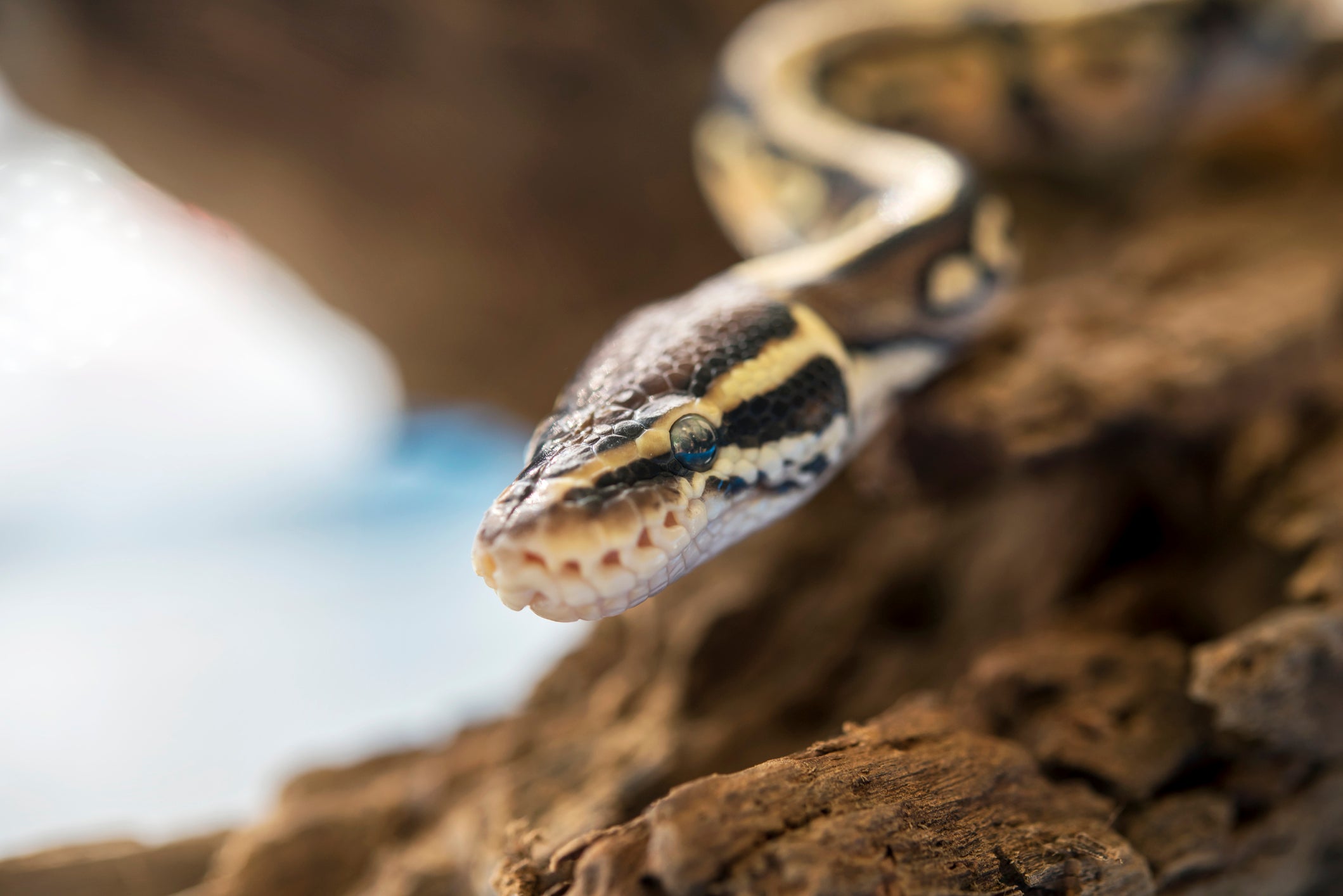
“With other exotic pets it’s might not be so clear but the people that keep them in my opinion are blinkered by their passions. There’s a common term which is ‘folklore husbandry’. That for me sums up the mentality. Reptile keepers like to be guided by others, by word of mouth.”
Like Newman, Warwick also cites “evidence”, just in a very different context, describing the culture of reptile keeping as “the blind leading the blind rather than being based evidence”.
“The ordinary vet can handle dogs, cats maybe rabbits, horses, a small number of species. In the exotic trade we have about 13,000 species if you include fish and birds. With reptiles there are 50 common species alone. Vets just can’t keep pace with that sort of diversity.
“I know vets who have given up practice because they can’t cope with the tales of misery and suffering. With cats and dogs almost everyone can work out when they’re not right. When it comes to reptiles there are a raft of very different indicators of good and bad welfare. I was at a conference and an exotics vet and I had a discussion. She said she thought she had a fairly good beat. I said name a few behavioural problems that you can identify with and she managed four. When I walk into a pet shop I’m looking for 30.
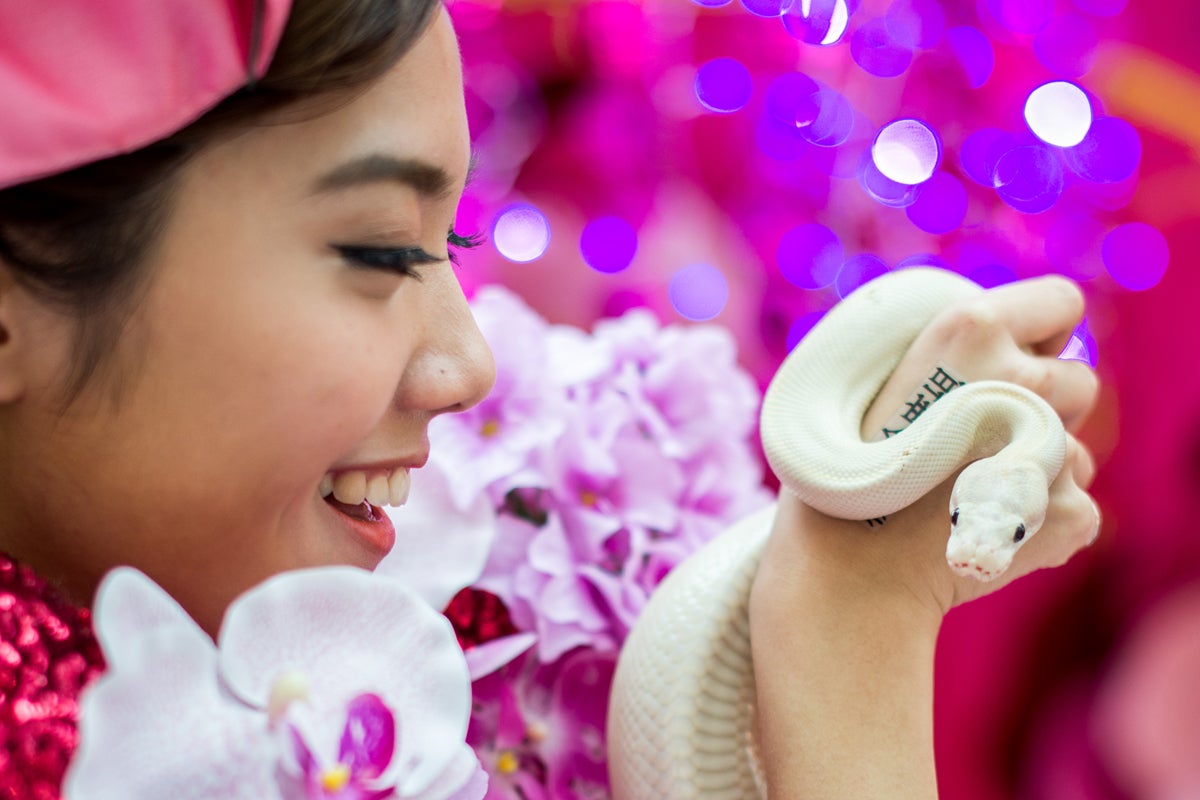
“If even the exotic vets really don’t have the background to try to establish welfare the ordinary keeper will have a very low chance. They don’t know what they’re looking for.”
Warwick is unequivocal about the solution. He wants a ban. “Bans shouldn’t shock anyone. They are the tool that society uses to control things that have to be controlled. Murder is banned. Fraud is banned. You can’t drink and drive. People say if you ban reptile keeping it will go underground. Of course. But if car theft was legalised the problem would be a lot bigger. Banning a problem makes it smaller, with a grandfather clause so what’s in people’s possession stays in possession.
“The mid-range solution is a positive list system. This is, again, the normal way that industries and professionals operate. What it means is if someone wants to introduce a new drug it has to be tested and licensed. There’s a list of permitted things so you have a list of permitted animals.”
Newman, of course, is fiercely opposed arguing that Peta and Warwick want “segregation”. “That’s their view and they’re entitled to it. I don’t support it. I like animals. My view is that it’s very important for people to have interactions with them. I got my first snake at five and that was 56 years ago. I’m still keeping them.”
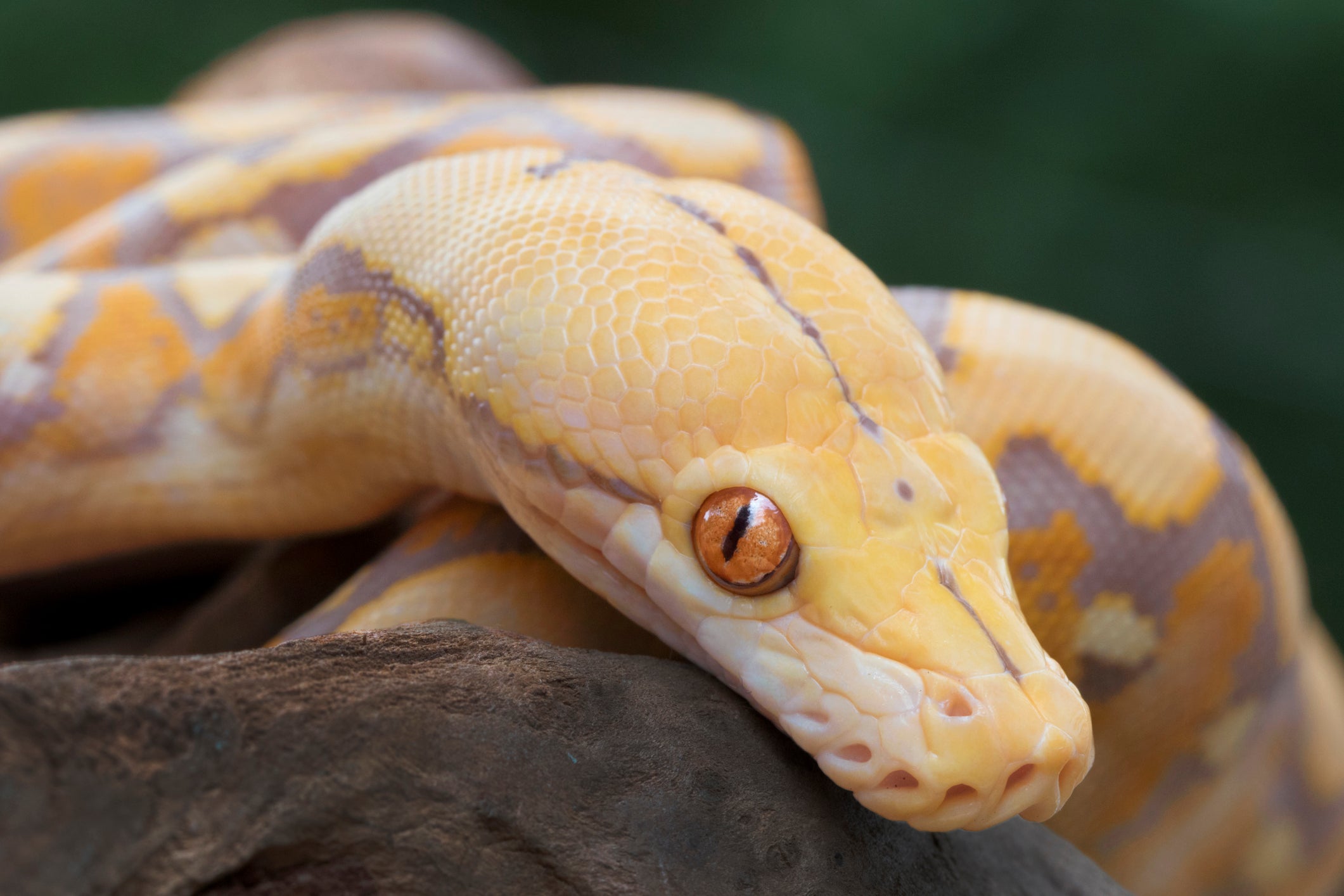
He is wary about some of the animals that are being kept, notably reticulated pythons, one of the world’s biggest snakes that have become popular but can grow to in excess of 6 metres and attain weights of up to 75 kilos. These giants of the animal kingdom are potentially dangerous to humans. For the everyday reptile keeper, taking one on does feel a bit like asking a Labrador owner to try their hand with a wolf.
“There is no perfect pet, there is no one pet suitable for everybody,” Newman says. “What I would say is for many reptiles they’re some of the easiest animals to keep. Most will take up less space, so for many people, living in a flat a royal python in a vivarium may well be a more practical pet than a great dane. They also require less maintenance.”
He points out that while in the 1970s there were virtually no products available to the would be reptile keeper, there are thousands today. “A royal python today will be quite happy in its vivarium. It doesn’t miss you. It doesn’t worry if you don’t take it out for a week.”
Adam Wickens is another fierce defender of the reptile hobby, which started out as a passion but has become his career. His Wickens Wicked Reptiles channel has been growing its subscriber base. It now boasts close to 100,000.
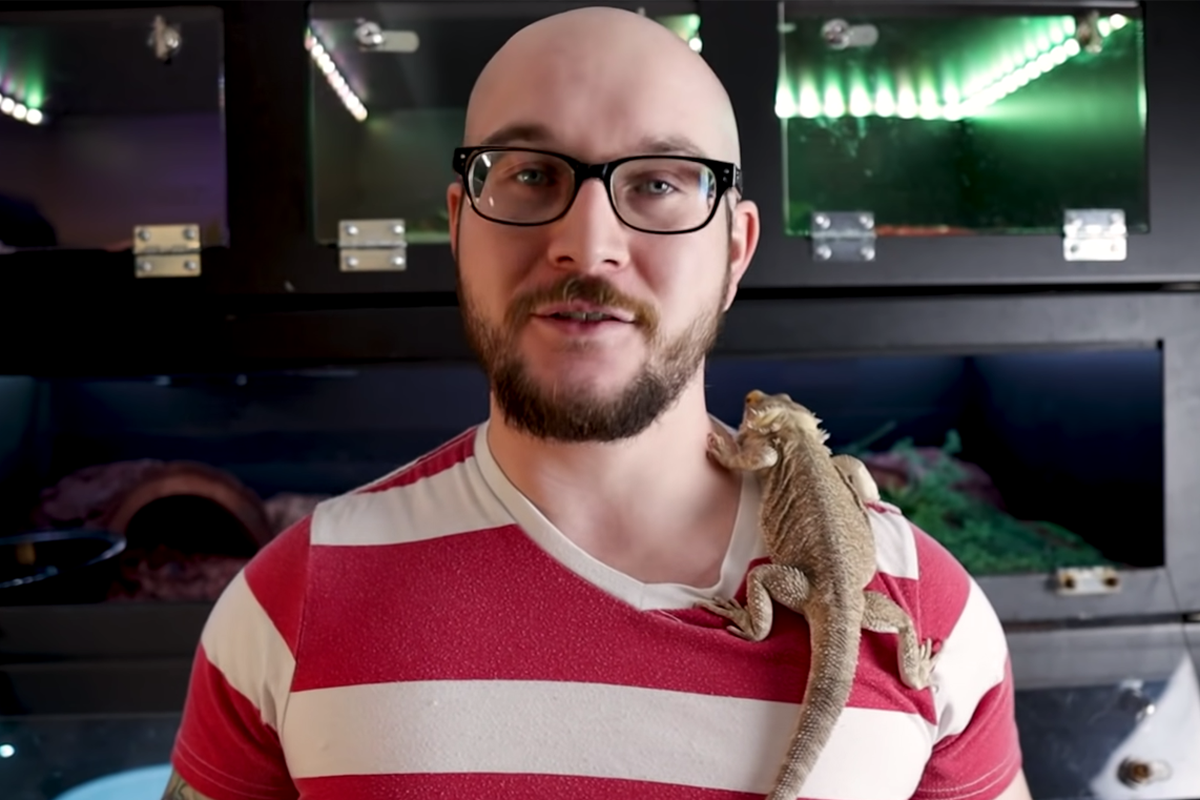
An affable Canadian, who doubles as a standup comic, he admits that “there is a lot of bad husbandry” out there but criticises groups like Peta for “only ever highlighting the bad examples”.
“That’s why people like me make videos. I aim to show an audience, hey this is how you should do it,” he says.
“Reptile keeping isn’t for everyone but if you like animals but you don’t maybe want a dog or a cat, reptiles are a fascinating alternative.”
It’s a bit likes guns here in Canada. Before you can get one you have to prove you’re able to use one and that you can be responsible
Wickens answers those who say that snakes are “wild” animals that shouldn’t be kept by humans, by saying: “Look, the wild is a harsh environment. It’s not like they’re humanely euthanised when they die there. They either get sick or they’re eaten. My bearded dragon, on the other hand, gets a regular supply of crickets and salad and doesn’t have to worry about predation. What I’m saying is, give us the opportunity to show that we can keep reptiles well. Remember, if they’re kept in captivity they can also be used to repopulate the wild if they die out.”
The enclosures featured on Wickens’ channel do indeed look impressive. If you wanted an example of responsible, high quality reptile care, it wouldn’t be a bad place to start.
But that’s not true of all of them. Some breeders, for example film themselves in front of rows and rows of soulless racks in which snakes live with only a piece of paper and a water bottle to enrich their spartan environments. Wickens says he isn’t opposed to regulation of the hobby. He thinks licensing would be a good idea for “many species”.
“It’s a bit likes guns here in Canada. Before you can get one you have to prove you’re able to use one and that you can be responsible. For big constrictors, say, that’s maybe a good idea. But we have dog licences don’t we.”
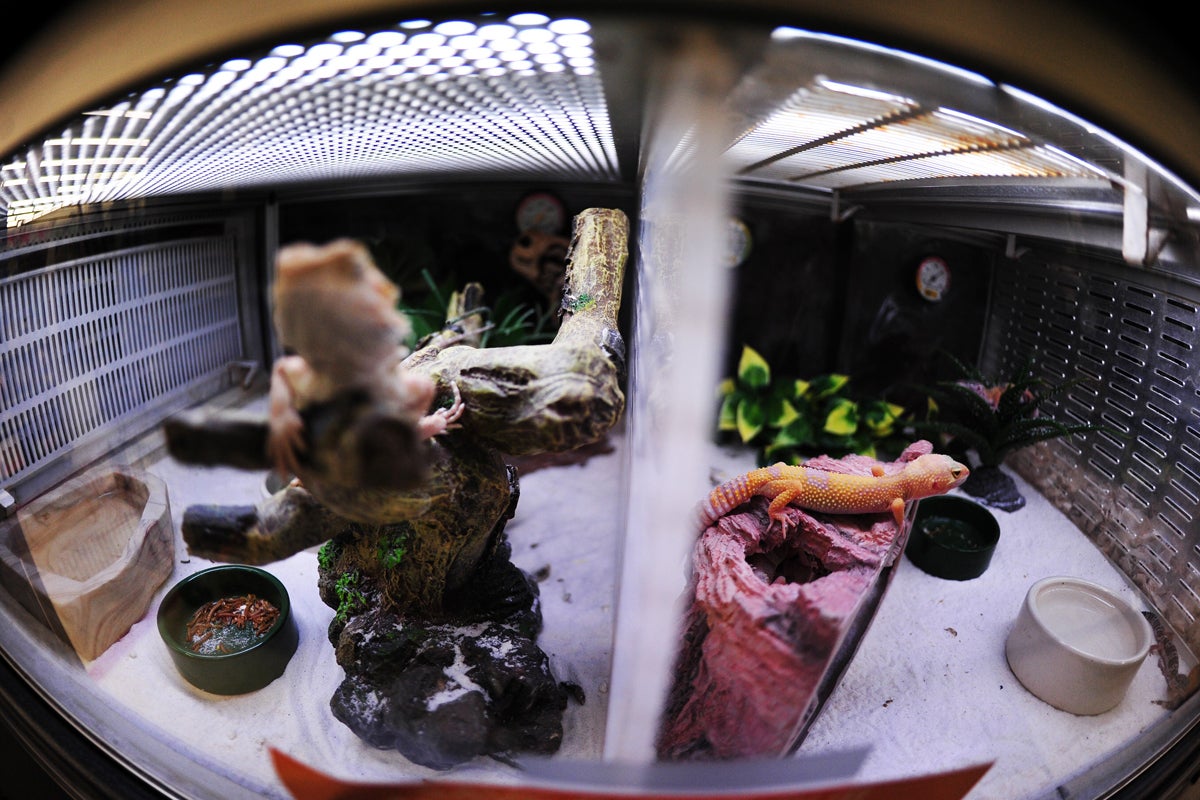
The RSPCA, Britain’s biggest animal welfare charity, takes a more moderate stance than Peta. It is deeply unhappy over the number of exotic pets that end up in its care “after people realise they’re not easy to care for (or once the novelty wears off)”.
“Others are rescued after they have been abandoned, escaped or been released, which then could present an invasive alien species risk to our native wildlife. Some species can be difficult for us to re-home, due to lack of suitable homes or interest.”
But for would-be keepers, the charity says: “We would urge prospective owners to thoroughly research the needs of the particular species and what is required in the care of the animal, using expert sources, and only consider keeping one if they can ensure they are fully able to provide for these needs. We would recommend that owners ask for help and advice from experienced keepers and vets that specialise in exotic animals.”
That isn’t so very far away from what Wickens is saying.
Read More:
The sheer numbers of reptiles in British homes would probably make a ban hard to enact, and could lead to a potential nightmare for organisations like the RSPCA, left to pick up the pieces if people were to give up their pets en masse.
But there is clearly a need for better education, and maybe regulation including licensing. Tougher penalties for those who fail to keep animals with the requisite care they require might also be a good idea. Let’s be fair here, you could easily extend that to dogs and cats, not all of which fare terribly well in human hands even after centuries of domestication and keeping.
Join our commenting forum
Join thought-provoking conversations, follow other Independent readers and see their replies
Comments